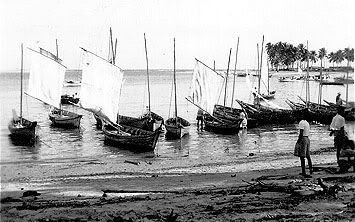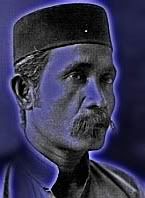The Best Detective Agency in Trengganu III
Earlier episodes: 1, 2.
Now read on...
Lepas ayang kkukok cahaya segar teluh masuk cceloh daung-daung pohong ru sebeloh pejabak jang besor, kena makgak teksi Cik Kaleh baru gilak, naik kkelik kuning ssiyor mmacor masuk mata budok-budok galah jaber jjalang gi sekoloh. Bila matahari condong sikik naik pulok ceroh nnerang dari cerming pitu pejabak, di bawah, cahaya tu kkelik dari gigi mah Muda Kor, mmacor ddalang ppala dia. Orang pangge dia Kor sebak tangang dia dekor, atah loteng keda dialah letaknya opeh ambe.
Pagi tu ambe turong awa makang apang kkeda Muda sebak ade urusang puko sepuloh. Muda tu mmusang orangnya, tapi pagi tu dia tengoh suka gelekek sebab ambe ajok dia gi ddarak. Tengoh dia hiruk air kawe hak dia baru tuang ddalang piring dia angkak ppale sikik, suka gelekek sapa ssembor air kawe dari mulok. "Mung Mak, mung ning memang nnakok pahek!''
"Kalu dia pange mung pong mung dak gi ssorang, Kor, mung bawok ambe jugok.''
Memang ambe yang nak jugok Muda gi sebak bila orang tengok tangang deko orang bekeng pong dak jadi nak maroh sebab ssiang kak dia. Biasanya ambe suka kalu orang nak paka ambe suroh jjadi mmata-gelak, lebih-lebih lagi le ning bila pitih dah kering takdok sekepeng. Tapi pagi tu rasa suka ccapo takok, mulok senyung tapi hati dak-dak dok ddebor. Hari ning ambe buka keh baru: nak cari laki Song. Tapi sebelong tu ambe kena cari Song Janda Kaya sebak kemaring dia mari cari ambe di pejabak, dok ddiri masang ccatung ddalang gelak, waktu ggarik, suroh gi jugok rumoh dia, kalu tidok, kata dia, dia nak mari kerik lebih dari berah ddalang bilik sebeloh opeh ambe.
Tiba-tiba bila dok tengoh mamoh apang denge kawe sama Muda Kor di meja bulak bbawah pohong sena ddepang keda makang dia, kaki ambe rasa pedih macang kena kerik ssitu jugok. Amba lopak teruh sambe garu kaki, nasib baik dak jatuh sokok dari ppala sebak teratok sutoh keda Muda. “Ha sudoh,” ambe jjerik ke Muda Kor, “dokkang dia mari kerik dah kaki ambe ssining.”
“Dak kanglah dia nak kerik kaki mung pagi bboler ning, kita pong baru nak gi rumoh dia,” Muda Kor jawak, sambe mata dok jengok bbawoh meja. “Tengok tu Mak,” dia teruh kata, “beratus-ratuh askar meroh nyalla dok gigik kaki mung. Jaga bbaik nati dia naik ddalang seluor ketik batu mung sape nak uboh obak ssitu?”
Ambe solor bbawoh meja lepah tu locak teruh, sambe tangang dok garu kaki dua-dua.
“Yang mung letak meja makang atah sarang semuk gata tu ba’ape Kor?” ambe tanye.
Habih ssembo sekali lagi air kawe dari mulok Muda Kor, dak tahang geli hati, kik-kik, tengok kaki ambe kena gigik semuk gata. Hak naik atah keting ambe kerenyek sepuloh ekor, hak lain dok tengoh panjak kaki habih lari bila ambe kebah kaki seluor.
Atah teksi Cik Kaleh nak gi rumoh Song, amba dok ggaru kaki lagi. “Le ning musing panah ddering banyok semuk keluor sebak tanoh kering. Musing jo’ong kurang sikik sebak tanah ddener,” Muda Kor kata, macanglah orang dak tahu.
Cik Kaleh dak kkata sebak gohek teksi naik bukit leloh bedoho. Sekali sekala dengor suara dia tanya, “Song? Song mana ni, kita dak pernoh dengo.” Dia senyung ssenegh, gigi dia pong mah jugok, macang Kor, rambok dia bbojeng kemah, ttangang dia ada jang dok kkelik ddalang cahaya matahari, masa tu dah nak naik tegak atah ppala.
Rumah Song warna aluminiang ttepi paya. Dari jauh napok macang rumoh besi, ceroh sapa ppinor mata. Mata gelak ddalang cerah, ambe kkenang ddalang hati.Tapi suara Kor tiba-tiba ganggu pikirang ambe: "Orang dok ssining kalu hujang, air bah tentu kkatok bbising bbangor, tapi hari ning sebak ceroh takdak bbunying apa-apa." Dia penoh denge kata-kata macang tu, dalang tapi takdok makne. Cik Kaleh berhenti ttepi lokang, mata dia dok tilek rumah Song dak kkelik sebak nama Song ning dia dak pernoh dengor. Muda Kor bayor dia samah; dia pong gostang, terus hilang bila teksi turung bukit, lari celubu.
Tengoh ambe tengok Cik Kaleh pegi jauh, ambe dengor suara Muda Kor naik sapa atah rumoh: “Assalamu alaikong! Ning rumoh Cik Song ke?”
“Naiklah,“ bunyi suara sorang budok ppunag, “ni Pak Mak Sprong ke?”
Ambe bekki sokok atah ppale, teruh ajak temang ambe naik sama. Atah rumoh ada sorang budok llaki kecik, dok nnulih atah meja. Lepah tu, keluor budok ppuang takdi, jepuk kami duduk atah kerusi panjang kayu ttepi pitu.
“Doklah dulu,” budok llaki tu tiba-tiba kata. “Mok tengoh ssetok kkarong ddalang nu.”
“Bukang kkarong saja ssetok tengok mok, Pok dulu pong ggitu...” Belong habih budok ppuang tu ccakak, keluar Song tiba-tiba, terhecok-hecok dari ddalang rumoh dia. Ambe ingak dari kemaring betok badang dia, penuh bika pitu opeh ambe, dia jjalang turong naik, turung naik macang orang nnari atah tanoh dak rata.
“Gi masok ddalang bilik, mak nak ccakak ning. Gi masuk buak air!” Bila dengor suara Song budak ppuang tu teruh masuk, tingga anak llaki lebihkurang 12 tahung tu di luor, dok bang dengor apa yang kami kata.
“Guane yang kecok tu?” ambe buak berani tanye Song Janda Kaya bila tengok dia jjalang turung naik, turung naik ke kerusi ddepang kami.
“Mung jangang banyok mulok jaga ttepi kaing orang, mung mari sebak nak tulong cari laki aku,” dia kata.
Bila ambe aleh mata tengok ttepi kaing dia baru ambe sedor. Kaki dia bukang kecok tapi tonjeng, sebak tu dia jjalang macang unta.
“Mung nak ngatte orang, mata mung yang kesek tu guane? Kemaring ddalang bilik mung gelak aku dak napok,” tiba-tiba Song datang balik, mata dia dok cerlong kat ambe.
“Oh ning masa jjadi Hoong Gak dulu, ambe lawang Kominih ddalang kebong getah, kena tembok sebelah mata.”
Bila dengor jawapang ambe to Muda Kor teruh suka kik-kik. Dia pong cerita selalu, “Tu bukang kena tembok, dulu kelahi denge orang ppuang dia, kena rocoh denge sodek.”
Kah! Kah! Muda ngilla.
Baru napok Song geli hati sikik, tapi dia dak jadi senyung, napok sangak dia ok. “Ning sape dia ning?” dia tanya, mata dok tengok tangang Muda hak rekok macang ulak kekek tu.
Ambe kata tu Muda, kawang ambe. Bila kata ggitu baru ambe sedor hari ning derumoh Song macanglah hari orang cacak sedunia: Song tonjeng, Muda dekor, ambe kesek; ada serema.
Lepah kami makang akok denge air sirak, Song pong cerita. Dia asal dari dekak Sekoloh Arab, lepah tu nnikoh denge Mbong, laki dia hak hilang lesak tujuh tahong dah dak juupa. Nama dia Song Janda Kaya bukang sebak tok llaki dia hak hilang tu banyak pitih tingga kat dia, tapi sebelong tu pong dia dah banyak harta hak pak dia tingga. Bila laki dia Mbong tu lari baru orang pangge dia janda, janda kaya. Dia nak cari laki dia le ning bukang sebak nak dia balik, tapi sebak dia ambek pitih Song banyok jugok, Song nak ambek balik hak dia.
“Dulu mung duduk dekak sekoloh Arab kang, Long Ladang mung kena?” ambe tanya, saja-saja.
“Dak kena ba’ape,” Song jawak, “Sama sekoloh denge kita.”
Bila balik ke opeh ambe teruh buang sokok sebak ppala dah panah banyok mmikir. Dah nak wak guana: janda bekeng, laki hilang, rumoh tepi paya. Ambe dengor suara anok ppuang dia, bukang kkarong saja ssetok, pok dulu pong ggitu jugok... Teruh ambe buka sapo surak kelabu hak dia beri tadi, keluar pitih sepuluh ria. Tengoh ambe tilik gambor Agong hak mula-mula tu dok tengok ambe dari atah pitih tu, bbunying orang ketok pitu, teruh masuk ppala Muda Kor jengok ddalang opeh amba.
“Mak, Hoong Gak tu nnatang apa?” dia tanya.
Cerita Mat Sprong ning hanya khayalang. Tak dok kena mengena dengang sapa-sapa hak masih hidok, mati dah atau pong dok tengoh rasa dak sedak tuboh. Kalau ada sama dengang sapa-sapa tu hanya kebetolang, bukang sengeleng buak.
[To be continued...]
 or parts of it in the 16th century, as did the Telanai who, judging from his title, came directly or indirectly from Palembang. I feel the same about the house of the Megat, as I do not think it was a title made in Trengganu and furthermore, it was the fashion in those days to have rulers come from outside their realms, see Melaka, Bintan, Perak, Kuala Brang, Perak or Pahang. The present queen of England came from the House of Sax-Coburg-Gotha, and the late, but unlamented, Farouk of Egypt, from Albania.
or parts of it in the 16th century, as did the Telanai who, judging from his title, came directly or indirectly from Palembang. I feel the same about the house of the Megat, as I do not think it was a title made in Trengganu and furthermore, it was the fashion in those days to have rulers come from outside their realms, see Melaka, Bintan, Perak, Kuala Brang, Perak or Pahang. The present queen of England came from the House of Sax-Coburg-Gotha, and the late, but unlamented, Farouk of Egypt, from Albania.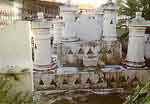 which is a good and rousing read, but unreliable as history. According to the Hikayat Hang Tuah went to Inderapura (Pahang) with Jebat and Kasturi, and 3000 fighting men. According to this account, Megat Panji Alam was ambushed by Hang Jebat and Hang Kasturi after he managed to evade them by jumping into the entrance to the audience hall of the Sultan of Pahang. The attackers took turns to stab our Megat repeatedly with their kris as he was washing his feet at the foot of the stairs. As all this was happening, Hang Tuah was inside, holding small talk with the Pahang ruler.
which is a good and rousing read, but unreliable as history. According to the Hikayat Hang Tuah went to Inderapura (Pahang) with Jebat and Kasturi, and 3000 fighting men. According to this account, Megat Panji Alam was ambushed by Hang Jebat and Hang Kasturi after he managed to evade them by jumping into the entrance to the audience hall of the Sultan of Pahang. The attackers took turns to stab our Megat repeatedly with their kris as he was washing his feet at the foot of the stairs. As all this was happening, Hang Tuah was inside, holding small talk with the Pahang ruler.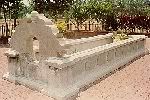 then it's impossible that he'd have met Hang Tuah, who was subject of Mansur Shah (1459-1477). Then, according to the Sejarah Melayu, the Telanai of Trengganu, was murdered by Seri Akar Raja on the orders of Sultan Muhammad Shah of Pahang because he felt slighted by the Telanai's direct mission to Melaka to pay homage to Alauddin Riayat Shah. Seri Akar Raja got Trengganu as reward (if only briefly) as the Telanai family fled, while his three grandchildren — Megat Sulaiman, Megat Hamzah, Megat Umar — were taken into adoption by Sultan Ala'uddin.
then it's impossible that he'd have met Hang Tuah, who was subject of Mansur Shah (1459-1477). Then, according to the Sejarah Melayu, the Telanai of Trengganu, was murdered by Seri Akar Raja on the orders of Sultan Muhammad Shah of Pahang because he felt slighted by the Telanai's direct mission to Melaka to pay homage to Alauddin Riayat Shah. Seri Akar Raja got Trengganu as reward (if only briefly) as the Telanai family fled, while his three grandchildren — Megat Sulaiman, Megat Hamzah, Megat Umar — were taken into adoption by Sultan Ala'uddin.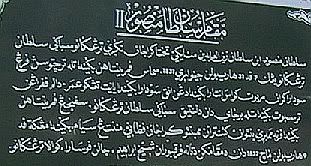 As I noted in my last posting, there are many old cemeteries in Kuala Trengganu that are familiar to the townspeople who go about living their daily lives, but of which we know little. The vast burial site on the edge of Kampung Patani may well have contained remains of Patani people who came down to Trengganu with Sultan Zainal Abidin I, who, if I'm not mistaken, was in Patani when orders came from his father the Tun Habib Bendahara of Johor to make haste to Taring Anu to install himself Sultan there.
As I noted in my last posting, there are many old cemeteries in Kuala Trengganu that are familiar to the townspeople who go about living their daily lives, but of which we know little. The vast burial site on the edge of Kampung Patani may well have contained remains of Patani people who came down to Trengganu with Sultan Zainal Abidin I, who, if I'm not mistaken, was in Patani when orders came from his father the Tun Habib Bendahara of Johor to make haste to Taring Anu to install himself Sultan there. 